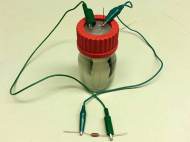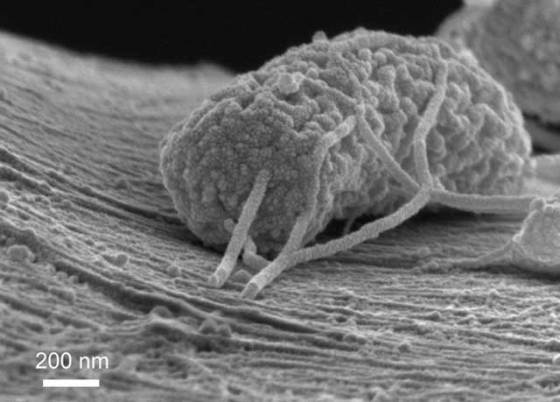Using ‘wired microbes’ to generate electricity from sewage
 Exoelectrogenic microbes are organisms evolved in airless environments which developed the ability to react with oxide minerals to create biological fuel needed for their survival. Although several research groups tried different approaches to tap into this source of energy since the turn of millennium, efficient use of these microbes as bio-generators proved to be challenging.
Exoelectrogenic microbes are organisms evolved in airless environments which developed the ability to react with oxide minerals to create biological fuel needed for their survival. Although several research groups tried different approaches to tap into this source of energy since the turn of millennium, efficient use of these microbes as bio-generators proved to be challenging.
Engineers at Stanford University recently devised a new way to generate electricity from sewage, using naturally occurring “wired microbes” as mini power plants. The “microbial battery” they created is driven by naturally occurring bacteria that evolved to produce electricity by digesting plant and animal waste.
Their laboratory prototype is about the size of a D-cell battery with two electrodes plunged into a vial of wastewater. Inside that murky vial, attached to the negative electrode, an unusual type of bacterium consumes particles of organic waste and produces electricity that is captured by the battery’s positive electrode.
At the battery’s negative electrode, colonies of wired microbes cling to carbon filaments that serve as efficient electrical conductors. As these microbes ingest organic matter and convert it into biological fuel, their excess electrons flow into the carbon filaments, and across to the positive electrode, which is made of silver oxide, a material that attracts electrons.
The electrons flowing to the positive node gradually reduce the silver oxide to silver, storing the spare electrons in the process. According to Stanford researchers, the positive electrode absorbs a full load of electrons after a day, converting the silver oxide into silver. At that point, the silver is removed from the battery and used to release the stored electrons when it is re-oxidized.
Stanford engineers estimate that the microbial battery can extract about 30 percent of the potential energy locked up in wastewater. Although there is far less energy potential in wastewater when compared to photovoltaic technology, the inventors claim it could be used to offset some of the electricity used to during wastewater treatment. Their next goal is to find a low-cost and efficient material for the positive node.
“We demonstrated the principle using silver oxide, but silver is too expensive for use at large scale”, said Yi Cui, an associate professor of materials science and engineering. “Though the search is underway for a more practical material, finding a substitute will take time.”
Aside offsetting electricity used in sewage treatment plants, the technology could be used to break down organic pollutants in the “dead zones” of lakes and coastal waters where fertilizer runoff and other organic waste can deplete oxygen levels and suffocate marine life.
For more information, you can read the paper published in PNAS: “Microbial battery for efficient energy recovery” [1.1MB PDF].










Leave your response!